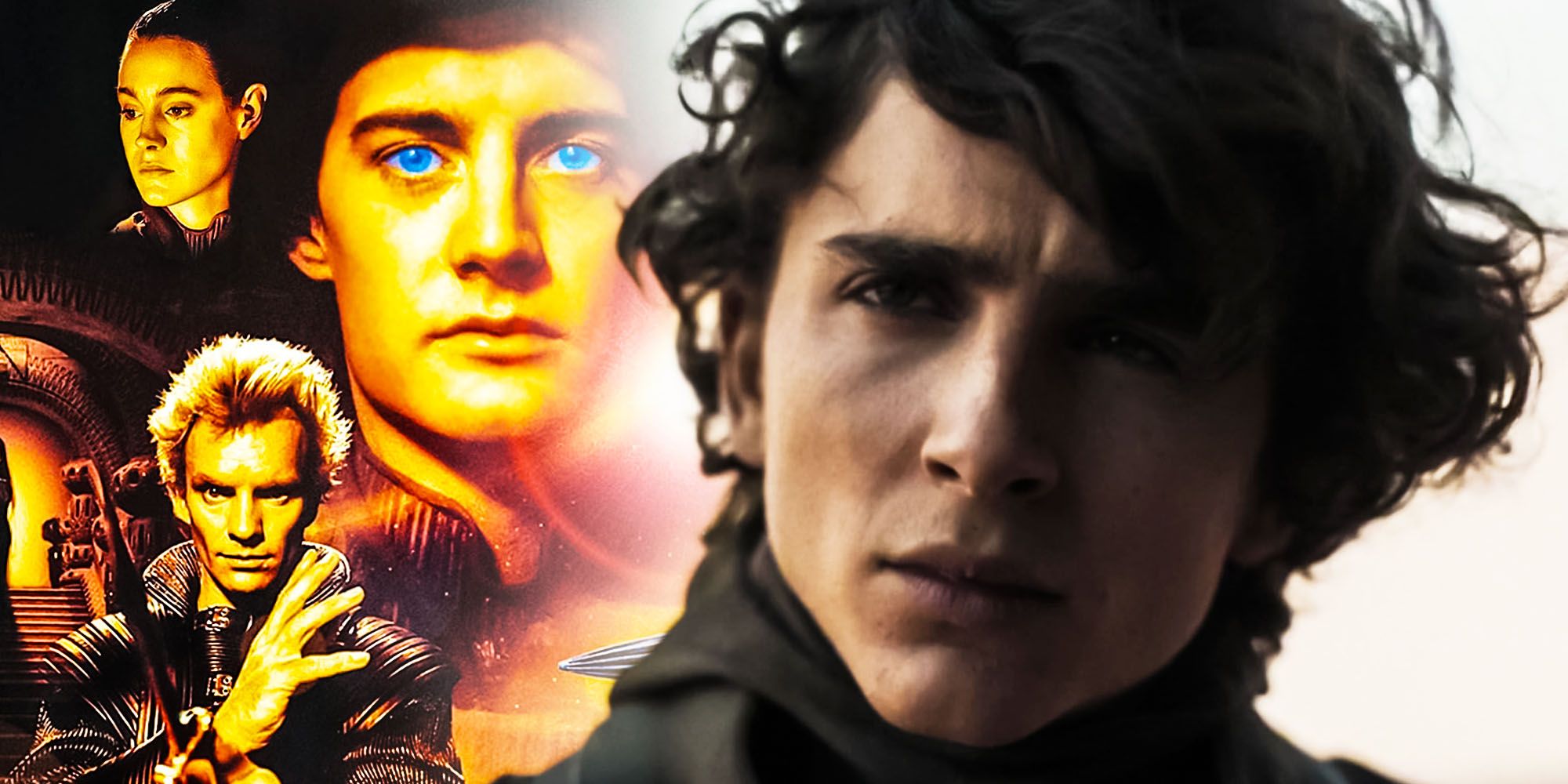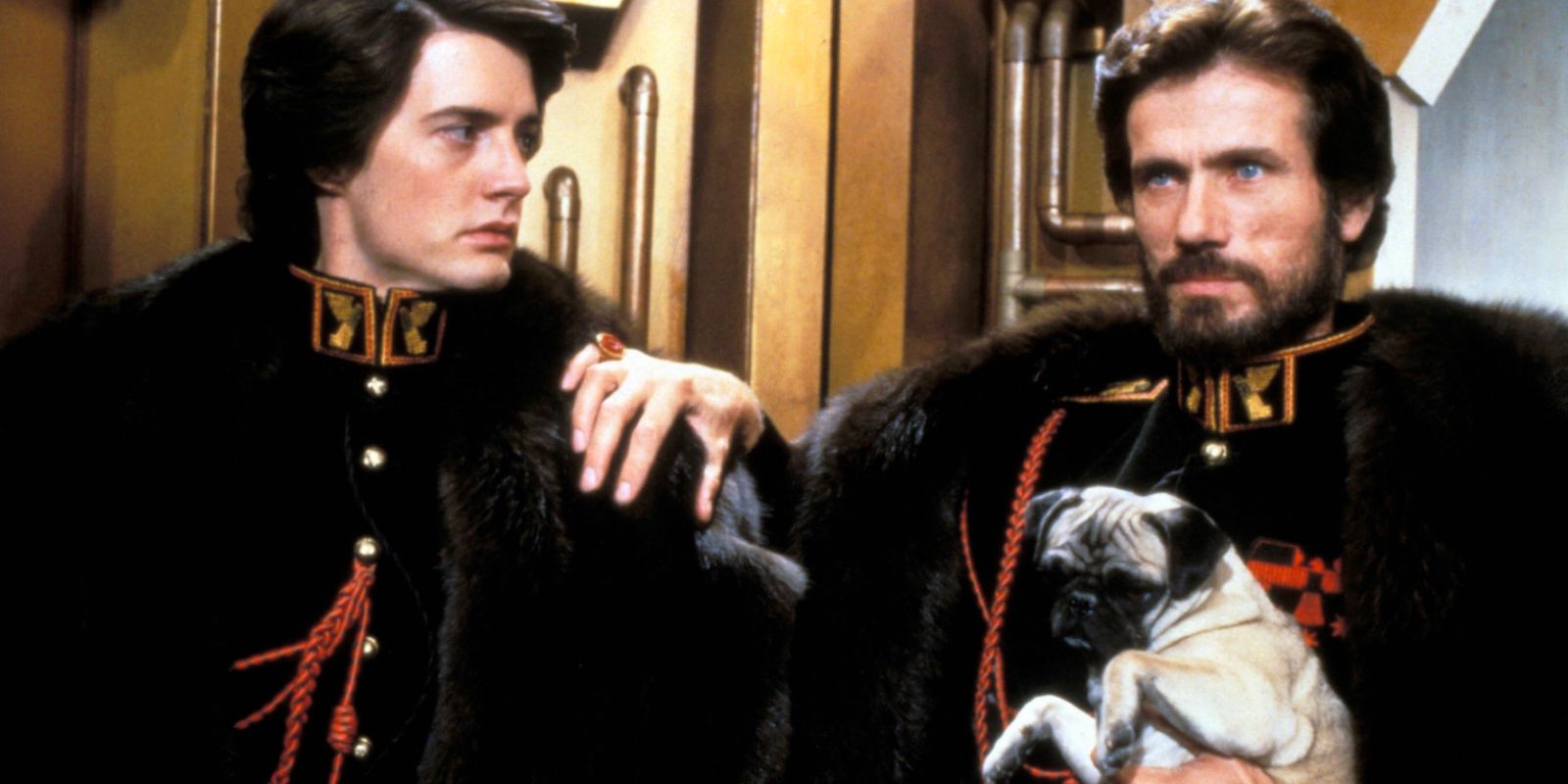
David Lynch's Dune was released in 1984 and had the inclusion of a pug in various scenes as the loyal pet of house Atreides, sparking an inquiry among fans and critics alike. This earlier adaptation of Frank Herbert's novel was a box office flop, getting a mixed reception from fans and detested by many critics upon its release. Much of the criticism was targeted at how David Lynch's movie compared to the book. Despite its early performance, the film has since become a cult classic, and the mystery behind the inclusion of a pug continues to be a point of discussion decades later, especially after Denis Villeneuve's Dune left out the pet.
The story of Dune takes place thousands of years in the future, following Paul Atreides and his noble family from their home planet of Caladan to the desert planet Arrakis. The plot itself is a struggle between various factions to obtain control over a drug-like commodity known as "spice" that is essential for space travel and is exclusive to Arrakis. The expansive worldbuilding in the novels lends to the possibility of many Dune sequels and has since made the novel series highly regarded in the genre. From the throne room on Caladan to battle with the Harkonnen and Sardaukar and finally the showdown between Paul and Feyd-Ratha, the small dog makes several appearances. Both the novels and Villeneuve’s adaptation are pug-free which has heightened the mystery behind Lynch’s choice as it does seem rather odd.
The most common explanation for the pug's inclusion in a Lynch’s Dune is a nod by the director to the European renaissance period. There are a few animal motifs used in the film that have metaphorical significance to the characters and themes, yet the pug seems to be the most out of place. The director David Lynch has since disowned his creation and refuses to answer the burning question surrounding the pug's existence which has inspired a closer look.

There is no doubt that the art style of Dune, especially House Atreides, is heavily influenced by the renaissance period. From the decor to clothing and even etiquette, there seems to be an intentional connection by Lynch to the era. The depiction of dogs in renaissance art was prevalent in hunting scenes, and the pug, in particular, was favored among nobles as a domesticated lap dog. The first appearance of the pug is with Duke Leto Atreides, sitting as a loyal companion, later held, then on Paul’s lap as they travel to Arrakis. Lynch is attempting to connect futurism with history to give audiences something to grasp in such a fantastical setting, while Villeneuve's film took a different approach in this regard.
Animals are often used as motifs, having metaphorical significance by reflecting the traits or predicaments of characters. The Emperor has many dogs on leads that signify his control and providence, while Leto’s pug sits loyally on his lap. It mirrors the characters of the two men by comparing their approaches to leadership as well as their positions on the hierarchy. The Emperor controls many through strength, while the Duke inspires absolute loyalty from a few. The Duke is an underdog, while the Emperor is the supreme ruler. This loyalty in regards to the Duke is best portrayed through Gurney Halleck, as he takes the pug into battle. This metaphorical connection is also a nod to the novels, as many other animal motifs are present such as the hawk chasing the mouse as Lady Jessica and Paul make the run of the Harkonnens, a powerful rival house.
David Lynch’s Dune was produced at a time when limitations in visual effects made these kinds of adaptations difficult, forcing creative compromises to appeal to an audience that wasn’t completely understood. The addition of a pug may not have seemed out of place in the '80s on a set filled with people eccentrically dressed. Today, however, expectations of photo-real effects, consistent tone, and hyper-realism make the addition of any earth-like animal seem anachronistic. It’s no wonder, then, why no pug was present in Villeneuve's film, despite the facetious disappointment of some fans at the lack of a Pug Atreides cameo.
Comments
Post a Comment